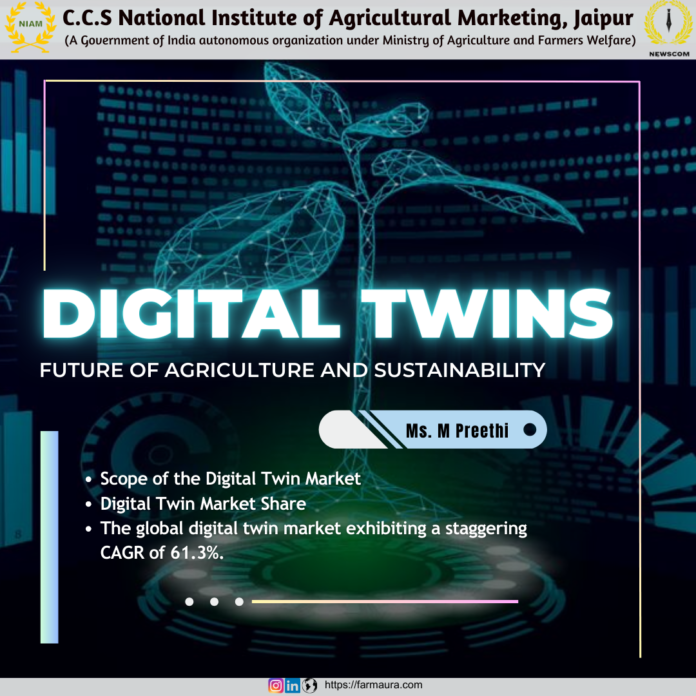Agriculture is often referred to as the backbone of human civilization. It is the fundamental sector that provides the basis for other sectors to survive. As the global population continues to grow, the requirement for food and agricultural products is increasing. Many innovations have been emerging day by day to improve agriculture. Among them, the digital twins technology is becoming the game changer.
Firstly, what is digital twins technology, it refers to the virtual representation of an object, person or system that contextualized in a digital version of its environment. Digital twins can help organisation simulate real situation and their outcomes, ultimately allowing it to make better decisions. Digital twins have successfully entered industrial applications, including aerospace, manufacturing, healthcare and smart farming. In context of smart farming, digital twins enable agriculture experts, researchers and farmers to simulate various scenarios, test different strategies and predict outcomes accurately. It is used in various fields like crop management, livestock farming, precision agriculture, predictive analysis etc. In the case of crop management, a farmer can refer the digital twins to irrigate land where it is required which reduces water waste and promotes more efficient crop growth. This innovation was first used in livestock farming of the agriculture field. Farmers can know the animal health deterioration before the real-world cow shows the symptoms through the digital twins animal. This helps farmers to take preventive measures for their livestock.
Implementation of digital twin technology with conjunction to technologies such as IoT, Artificial Intelligence (AI) and cloud computing expected to create boom in market. The Asia pacific digital twin market will register CAGR of 31% for the period of 2023-2032. Intensive competition among leading players countries like India, China, Japan, South-Korea are to introduced advanced and innovative programmes that will encourage various industries to invest in such products. There are various companies and start-ups working in digital twin technology such as Wipro, Falcon Labs, Twingrid Labs etc.
Lastly, the challenge in this innovation is technology is its cost-effectiveness. Farmers are not able to afford these costly structures to use. Also, this kind of technology-related innovations require access to training and support to effectively implement in the farmer’s field. It is a data-driven technology that requires privacy and security concerns to be maintained safe from unauthorized access and misuse by other parties.
conclusion
The digital twins is a great tool to implement comes with challenges. As the world faces the challenge of feeding a growing population which minimizes environmental impacts, digital twin technology is a critical component of sustainable agriculture. It goes parallel to the ongoing data-driven technology with sustainable agriculture. This technology takes a lot of time to be in use. A projected leap from USD 10.1 billion in 2023 to an impressive USD 110.1 billion by 2028, the global digital twin market is poised for remarkable expansion, exhibiting a staggering CAGR of 61.3%.
Scope of the Digital Twin Market
| Report Coverage | Details |
| Market Size in 2023 | USD 14.17 Billion |
| Market Size by 2032 | USD 269.1 Billion |
| Growth Rate from 2023 to 2032 | CAGR of 38.7% |
| Largest Market | Asia Pacific |
| Fastest Growing Market | North America |
| Base Year | 2022 |
| Forecast Period | 2023 to 2032 |
Digital Twin Market Share, By Application, 2022 (%)

(https://www.gminsights.com/industry-analysis/digital-twin-market)




